
The Wadiyar dynasty,(Kannada:[ oɖejɐru]) also referred to as the Wadiyars of Mysore, is a late-medieval Indian royal family of former maharajas of Mysore from the Urs clan originally based in Mysore city.
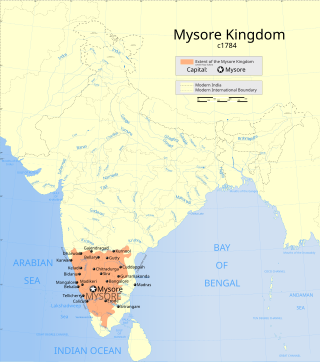
The Kingdom of Mysore was a geopolitical realm in southern India founded in around 1399 in the vicinity of the modern-day city of Mysore and prevailed until 1950. The territorial boundaries and the form of government transmuted substantially throughout the kingdom's lifetime. While originally a feudal vassal under the Vijayanagara Empire, it became a princely state in British India from 1799 to 1947, marked in-between by major political changes.

Chamarajendra Wadiyar X was the twenty-third Maharaja of Mysore between 1868 and 1894.

Jayachamarajendra Wadiyar, sometimes simply Jayachamaraja Wadiyar, was the twenty-fifth and last ruling Maharaja of Mysore, reigning from 1940 to 1950, who later served as the governor of Mysore until 1964 and as governor of Madras from 1964 to 1966.
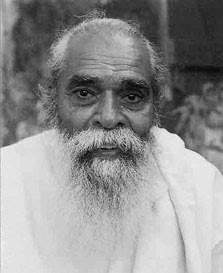
Ganapathi Venkataramana Iyer was an Indian film director and actor. He was nicknamed "Kannada Bheeshma". His film Adi Shankaracharya (1983) won four National Film Award, including Best Film, Best Screenplay, Best Cinematography and Best Audiography. His film Swami Vivekananda (1998) was nominated in the Best Film category at the Bogotá Film Festival, for which Mithun Chakraborty won the national award for Best Supporting Actor.

The Kingdom of Mysore (1399–1950) was founded by Yaduraya in 1399 as a feudatory of the Vijayanagara Empire and became an independent kingdom in the early 17th century, after the decline of the Vijayanagara Empire. Many musicians and composers have presumably adorned the courts of the Mysore kings from Yaduraya's time, furthering the Dakshinadi school of music that had developed in earlier centuries. However, records are only available from the time of King Ranadheera Kanteerava Narasaraja Wodeyar (1638). Musical treatises surviving from this time, though, provide ample information on the music, musical instruments, the types of compositions, the raga (melodies) and the tala (rhythms) used. Though all the Mysore kings patronised music, the golden age of Carnatic music was considered to be during the reigns of Kings Krishnaraja Wodeyar III (1794–1868), Chamaraja Wodeyar IX (1862–1894), Krishnaraja Wodeyar IV (1884–1940) and Jaya Chamaraja Wodeyar (1919–1974). The reign of Krishnaraja Wodeyar IV is regarded as particularly important in musical terms.

Kanthirava Narasaraja Wodeyar I was the twelfth maharaja of the Kingdom of Mysore from 1638 to 1659.

Karaganahalli Subbaraya Ashwathanarayana was an Indian veteran actor who appeared in Kannada films He appeared in over 370 films during his five-decade-long career. His only memorial in the whole of Karnataka, India is in the Kengeri satellite town, Bengaluru. Memorial name - "K. S. Ashwath Memorial Children's Park".
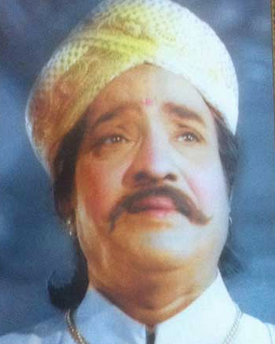
Tirumakudalu Narasipura Balakrishna was an Indian actor in Kannada cinema. He was said to have a hearing problem and some say that he was totally deaf. However, he would catch the lip movements of the artists and would narrate the dialogues spontaneously. He was popular for his comic and villainous roles in films like Kantheredu Nodu (1961), Muriyada Mane (1964), Bangaarada Manushya (1972), Gandhada Gudi (1973) and Kaamana Billu (1983) and appeared in numerous versatile roles over a hundred films that starred Rajkumar in the lead role.
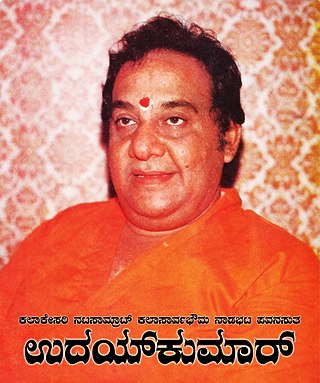
Bommasandra Srinivasaiah Suryanarayana Murthy, known by his screen name Udaykumar, was an Indian actor and producer in Kannada cinema. He, along with Kalyan Kumar and Rajkumar, were called the Kumarathrayaru of Kannada cinema. He authored many dramas and books. He performed a broad range of roles and worked with all of the prominent actors of his day. He portrayed heroic characters early in his career and then played more nuanced villainous characters, often countering Rajkumar's heroic persona in historicals and mythologicals.
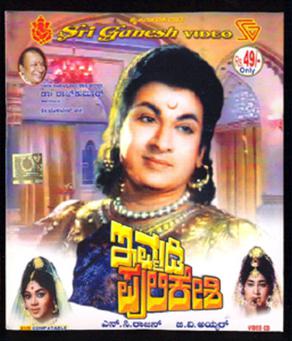
Immadi Pulikeshi is a 1966 Kannada-language biographical film written by G. V. Iyer and directed by N. C. Rajan. The cast includes Rajkumar, Udayakumar, Jayanthi, Kalpana and Balakrishna. The film had a soundtrack and original score by G. K. Venkatesh and cinematography by B. Dorairaj and Rajaram.
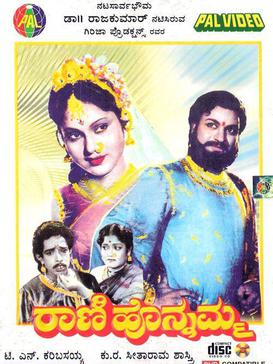
Rani Honnamma is a 1960 Indian historical drama film in Kannada language, directed and written by K. R. Seetharama Sastry and produced by Karibasaiah. The film stars Rajkumar and Leelavathi.
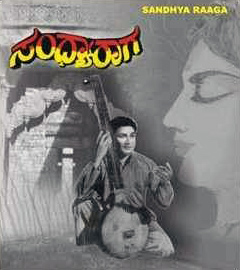
Sandhya Raga is a 1966 Indian Kannada-language film, directed by A. C. Narasimha Murthy and co-produced by him along with A. Prabhakara Rao. The film stars Rajkumar, Udaykumar, Narasimharaju and K. S. Ashwath. The film has musical score by G. K. Venkatesh.
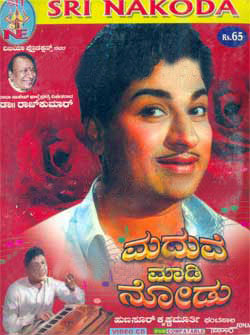
Maduve Madi Nodu is a 1965 Indian Kannada-language film, directed by Hunsur Krishnamurthy and produced by Nagi Reddi and Chakrapani. The film stars Rajkumar, R. Nagendra Rao, Udaykumar and Narasimharaju. The film has musical score by Ghantasala. It is a remake of producer's own Telugu film Pelli Chesi Choodu (1952). The movie was a profitable venture and was declared a super hit.
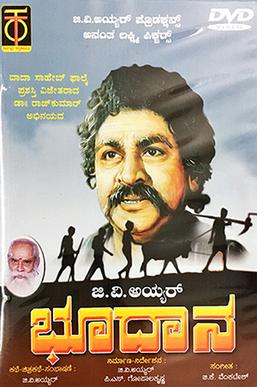
Bhoodana is a 1962 Indian Kannada-language film jointly directed and produced by G. V. Iyer and P.S. Gopalkrishna. The film stars Rajkumar, Kalyan Kumar, Udaykumar and K. S. Ashwath. The film has musical score by G. K. Venkatesh.

Sri Ramanjaneya Yuddha is a 1963 Indian Kannada-language film, directed by M. Nageshwara Rao and M S Nayak. The film stars Rajkumar, Udaykumar, K. S. Ashwath and Dikki Madhavarao. The film has musical score by Satyam who made his debut through this film. The title card of the movie revealed that this was Rajkumar's 50th movie. The movie was remade in Telugu in 1975 as Sri Ramanjaneya Yuddham starring N. T. Rama Rao.

Swarna Gowri is a 1962 Indian Kannada-language film, directed by Y. R. Swamy and produced by D. R. Naidu. The film stars Rajkumar, Krishna Kumari, Udaykumar and Narasimharaju. The film has musical score by M. Venkataraju. The movie was simultaneously shot in Telugu with the same name by the same producer and director with Kanta Rao and Krishna Kumari in the lead roles.
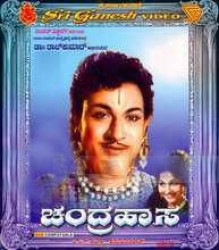
Chandrahasa is a 1965 Indian Kannada-language film, directed by B. S. Ranga and produced by B. S. Ranga. The film stars Rajkumar, Udaykumar, K. S. Ashwath and Narasimharaju. The film had musical score by S. Hanumantha Rao.
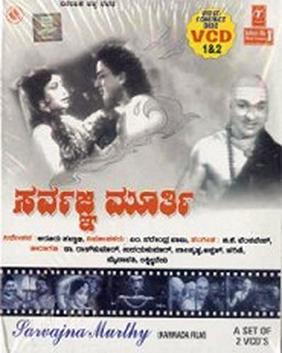
Sarvagna Murthy is a 1965 Indian Kannada-language film, directed by Aruru Pattabhi and produced by M. Narendra Babu. The film stars Rajkumar, Harini, Udaykumar and Mynavathi. The film has musical score by G. K. Venkatesh. The movie chronicles the life of Kannada poet - philosopher Sarvajna. Rajkumar's brother Varadaraj appeared as his brother in the movie.
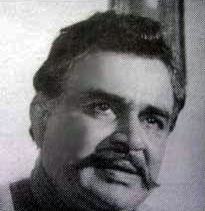
Venkataraju known by his professional name Rajanand (1927-2004), was an Indian actor in the Kannada film industry. Some of the notable films of Rajanand as an actor include Operation Diamond Racket (1978), Mayura (1975), and Eradu Kanasu (1974).



















